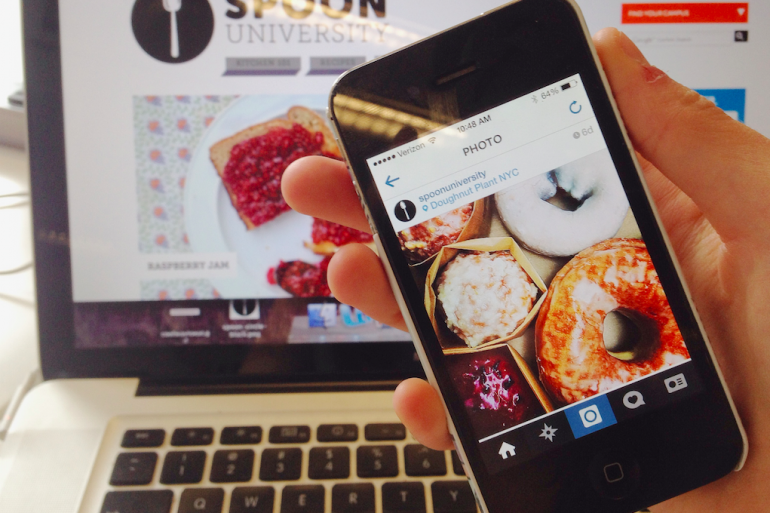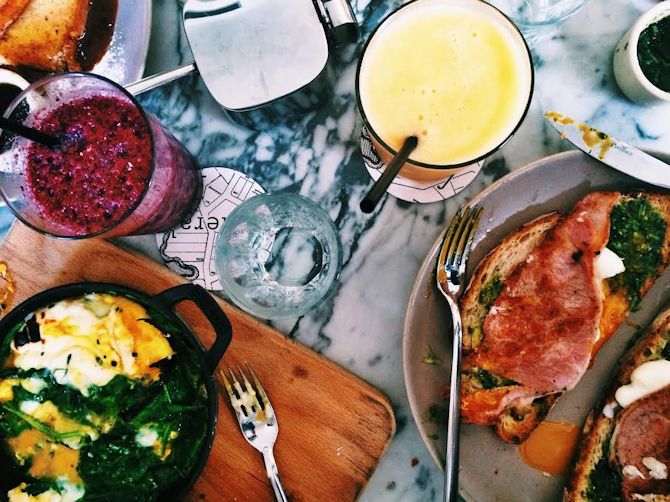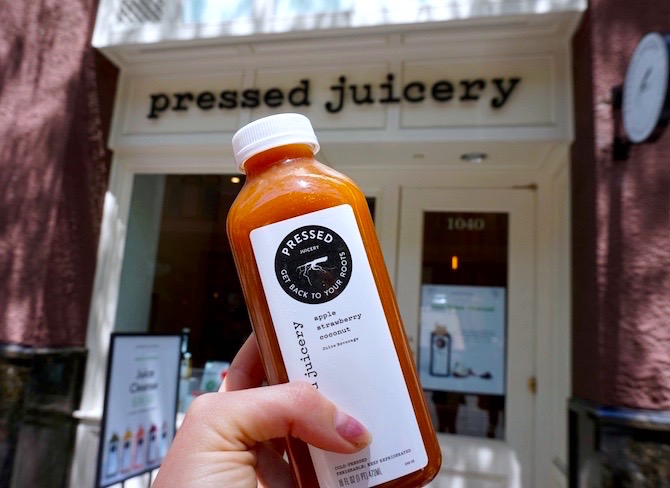Drive 2.5 hours to a cafe offering the newest food trend. Choose an item from the menu based on its aesthetic appearance, nutritional value and “farm-to-fork” factor. Set silverware next to the dish, strategically positioned to look like you caught a candid moment between your spoon and fork.
You decide the meal setup needs a pop of color, so you wait an extra 15 minutes for a matcha latte. Finally, you stand on a chair to get the right angle (pretty much numb to any potential embarrassment at this point) and click. Voila.

Photo by Becky Hughes
A few edits and filters later, an Instagram shot worthy of 200+ likes is born. Your food might be long cold, but with a caption of pure gold, you can finally bite into in the meal you’ve traded the last of your cash for and traveled miles to get your hands on. #noragrets
It’s hard to say which you’ll enjoy more: the actual flavor of your beautiful açaí bowl, or the feeling of being a part of a larger trend within the foodie world.

Photo by Becca Buchanan
With the push of a button, your food went from simply a means of nourishment to a statement on social media, claiming a definite place in the limelight of millennial culture. It’s no secret that the millennial obsession with sharing trendy foods on social media is fueling a food revolution and even positively changing the future of America’s food industry.

Photo by Maggie Pizzo
However, the fixation on food may come with consequences as well. Food is no longer perceived as simply just fuel, but it holds new social value. The willingness to spend more money on food may be explained by the increase of food documentation on social media.
For example, in the act of posting that $100 donut, (gold encrusted and filled with champagne jelly, mmm…), you are investing in something more than just fulfilling a craving for fried dough — you’re investing in your future foodstagram, the additional social value bought at the outrageous pastry shop from three towns over.

Photo by Erica Yang
If you’re guilty of going great lengths to get grub (and the documented picture of the grub), you’re not alone. Eve Turow, author of A Taste of Generation Yum, suggests additional reasons why millennials are obsessed with food posts displaying their latest scrumptious buy.
“When you post a photo of your organic kale salad from Whole Foods on Instagram, you’re saying a lot about yourself: that you have enough money to shop at Whole Foods, that you eat healthy food and that you care about supporting organic agriculture,” Turow said in an interview with Food Network. It is evident that millennials see food in a different way than generations before them by using it as a way to build upon identity and status, especially online.

Photo by Rachel Livengood
Don’t get us wrong — sometimes making a road trip out of venturing to a trendy pastry shop to buy a cruffin, posting an artfully crafted foodstagram, or scrolling through Tasty vids will only make your day brighter, not to mention roaming Whole Foods aisles (because is there anything really better than the wonderland that is Whole Foods?).
However, with the whirlwind of media centered around food documentation, it’s always good to stop and think twice about what you’re really paying for when you splurge on food.

GIF courtesy of giphy.com
Sometimes, it’s worth giving your phone a breather and taking the time to appreciate the people around the table and the enjoy the experience of eating.
#SpoonTip: Read up on mindful eating.




